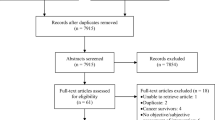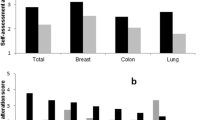Abstract
Background: The frequency and clinical features of drug-related taste and/or smell impairments are currently unclear.
Objective: The aim of this study was to identify major drug classes associated with taste and smell alterations reported to the Italian spontaneous adverse drug reaction (ADR) reporting database.
Methods: The association between drug and altered taste or smell was investigated by case/non-case methodology. The reporting odds ratio (ROR) was used as a measure of disproportionality. Cases were defined as patients with at least one ADR related to taste or smell impairments. The non-cases included all patients without any ADRs related to taste or smell alterations.
Results: According to the selection criteria, 52 166 reports were included in the analysis. Overall, 182 cases of drug-related taste and/or smell dysfunctions were identified. Statistically significant unadjusted RORs were reported for macrolides (n = 31; 7.1; 95% CI 4.8, 10.5), terbinafine (the only drug reported within the group of antimycotics belonging to the Anatomical Therapeutic Chemical class D01AE) [n=17; 76.4; 95% CI 44.0, 132.6], fluoroquinolones (n= 15; 1.7; 95% CI 1.0, 2.8) and protein kinase inhibitors (n= 10; 4.0; 95% CI 2.1, 7.7). When RORs were adjusted for sex and age category, the disproportion remained statistically significant for all of the previously mentioned drug classes.
Conclusions: Taste and/or smell abnormalities are common, sometimes unexpected and often persistent complaints of patients during pharmacological treatments. Physicians should be aware of the impact of these ADRs on patients’ quality of life.



Similar content being viewed by others
References
Scully C, Bagan JV. Adverse drug reactions in the orofacial region. Crit Rev Oral Biol Med 2004; 15(4): 221–39
Griffin JP. Drug-induced disorders of taste. Adverse Drug React Toxicol Rev 1992; 11(4): 229–39
Henkin RI. Drug-induced taste and smell disorders: incidence, mechanisms and management related primarily to treatment of sensory receptor dysfunction. Drug Saf 1994 Nov; 11(5): 318–77
Ackerman BH, Kasbekar N. Disturbances of taste and smell induced by drugs. Pharmacotherapy 1997; 17(3): 482–96
Doty RL, Philip S, Reddy K, et al. Influence of antihypertensive and antihyperlipidemic drugs on the senses of taste and smell: a review. J Hypertens 2003; 21: 1805–13
Doty RL, Bromley SM. Effects of drugs on olfaction and taste. Otolaryngol Clin N Am 2004; 37: 1229–54
Doty RL, Shah M, Bromley SM. Drug-induced taste disorders. Drug Saf 2008; 31(3): 199–215
Zabernigg A, Gamper EM, Giesinger JM, et al. Taste alterations in cancer patients receiving chemotherapy: a neglected side effect? Oncologist 2010; 15(8): 913–20
Epstein JB, Phillips N, Parry J, et al. Quality of life, taste, olfactory and oral function following high-dose chemotherapy and allogeneic hematopoietic cell transplantation. Bone Marrow Transplant 2002; 30: 785–92
Mattes RD, Arnold C, Boraas M. Learned food aversions among cancer chemotherapy patients: incidence, nature, and clinical implications. Cancer 1987; 60: 2576–80
Brämerson A, Johansson L, Ek L, et al. Prevalence of olfactory dysfunction: the Skövde population-based study. Laryngoscope 2004; 114: 733–7
Kiewe P, Jovanovic S, Thiel E, et al. Reversible ageusia after chemotherapy with pegylated liposomal doxorubicin. Ann Pharmacother 2004; 38(7–8): 1212–4
Minakata Y, Yamagata T, Nakanishi H, et al. Severe gustatory disorder caused by cisplatin and etoposide. Int J Clin Oncol 2002; 7(2): 124–7
Lemont H, Sabo M. Terbinafine-associated taste disturbance with normal taste threshold scores. J Am Pediatr Med Assoc 2001; 91(10): 540–1
Doty RL. Office procedures for quantitative assessment of olfactory function. Am J Rhinol 2007; 21: 460–73
Cave AJ, Cox DW, Vicaruddin O. Loss of taste with clopidogrel. Can Fam Physician 2008; 54(2): 195–6
Moura MD, Senna MI, Madureira DF, et al. Oral adverse effects due to the use of nevirapine. Contemp Dent Pract 2008; 9(1): 84–90
Ellul P, Vella V, Vassallo M. Reversible dysgeusia attributed to azathioprine [letter]. Am J Gastroenterol 2007; 102(3): 689
Ghanizadeh A. Unfavorable smell with citalopram? J Clin Psychopharmacol 2007; 27(5): 528–9
Young TM, Mathias CJ. Taste and smell disturbance with the alpha-adrenoceptor agonist midodrine. Ann Pharmacother 2004; 38(11): 1868–70
Golka K, Roth E, Huber J, et al. Reversible ageusia as an effect of clopidogrel treatment. Lancet 2000; 355(9202): 465–6
Uppsala Monitoring Centre. Safety monitoring of medicinal products: guidelines for setting up and running a pharmacovigilance centre. Uppsala: Uppsala Monitoring Centre WHO Collaborating Centre for International Drug Monitoring, 2000
Van Puijenbroek E, Diemont WL, van Grootheest AC. Application of quantitative signal detection in the Dutch spontaneous reporting system for adverse drug reactions. Drug Saf 2003; 26(5): 293–301
Mickey RM, Greenland S. The impact of confounder selection criteria on effect estimation. Am. J Epidemiol 1989; 129: 125–37
Schelleman H, Bilker WB, Brensinger CM, et al. Warfarin with fluoroquinolones, sulfonamides, or azole antifungals: interactions and the risk of hospitalization for gastrointestinal bleeding. Clin Pharmacol Ther 2008 Nov; 84(5): 581–8
Tanigake A, Miyanaga Y, Nakamura T, et al. The bitterness intensity of clarithromycin evaluated by a taste sensor. Chem Pharm Bull (Tokyo) 2003; 51: 1241–5
Del Bortolo Ruenis AP, Nobre Franco GC, Baglie S, et al. A PK/PD approach on the effects of clarithromycin against oral and nasal microbiota of healthy volunteers. Int J Clin Pharmacol Ther 2009; 47: 96–103
Rolls ET. Taste, olfactory, and food texture processing in the brain and the control of food intake. Physiol Behav 2005; 85: 45–56
Cain WS, Murphin CL. Interaction between chemoreceptive modalities of odour and irritation. Nature 1980; 284: 255–7
Dalton P, Doolittle N, Nagata H, et al. The merging of the senses: integration of subthreshold taste and smell. Nat Neurosci 2000; 3: 431–2
Landis BN, Scheibe M, Weber C, et al. Chemosensory interaction: acquired olfactory impairment is associated with decreased taste function. J Neurol 2010; 257: 1303–8
Stinton N, Atif MA, Barcat N, et al. Influence of smell loss on taste function. Behav Neurosci 2010; 124: 256–64
Beutler M, Hartmann K, Kuhn M, et al. Taste disorders and terbinafine [letter]. BMJ 1993; 307: 26
Stricker BH, Van RM, Sturkenboom MC, et al. Taste loss to terbinafine: a case control study of potential risk factors. Br J Clin Pharmacol 1996; 42: 313–8
Bong JL, Luke TW, Evans CD. Persistent impairment of taste resulting from terbinafine. Br J Dermatol 1998; 139: 747–8
Doty RL, Haxel BR. Objective assessment of terbinafineinduced taste loss. Laryngoscope 2005; 115: 2035–7
Christ W, Esch B. Adverse reactions to fluoroquinolones in adults and children. Infec Dis Clin Pract 1994; 3: 168–76
Gallelli L, Del Negro S, Naty S, et al. Levofloxacin-induced taste perversion, blurred vision and dyspnoea in a young woman. Clin Drug Investig 2004; 24: 487–9
Shiffman SS, Zervakis J, Westall HL, et al. Effect of antimicrobial and anti-inflammatory medications on the sense of taste. Physiol Behav 2000; 69: 413–24
Hong JH, Omur-Ozbek P, Stanek BT, et al. Taste and odor abnormalities in cancer patients. J Support Oncol 2009; 7: 58–65
Bernhardson BM, Tishelman C, Rutqvist LE. Olfactory changes among patients receiving chemotherapy. Eur J Oncol Nurs 2009; 13: 9–15
Steinbach S, Hummel T, Böhner C, et al. Qualitative and quantitative assessment of taste and smell changes in patients undergoing chemotherapy for breast cancer or gynaecologic malignancies. J Clin Oncol 2009; 27: 1899–905
Suwatte P, Chow S, Berg BC, et al. Sunitinib: a cause of bullous palmoplantar erythrodysthesia, periungual edrythema, and mucosistis. Arch Dermatol 2008; 144: 123–5
Ovesen L, Sorensen M, Hannibal J, et al. Electrical taste detection thresholds and chemical smell detection thresholds in patients with cancer. Cancer 1991; 15: 2260–5
Yamagata T, Nakamura Y, Yamagata Y et al. The pilot trial of the prevention of the increase in electric taste thresholds by zinc containing fluid infusion during chemotherapy to treat primary lung cancer. J Exp Clin Cancer Res 2003; 22: 557–63
Bertertche MV, Dalix AM, d’Ornano AM et al. Decreased taste sensitivity in cancer patients under chemotherapy. Support Care Cancer 2004; 12: 571–6
Deems DA, Doty RL, Settle RG, et al. Smell and taste disorders: a study of 750 patients from the University of Pennsylvania Smell and Taste Center (1981–1986). Arch Otolaryngol Head Neck Surg 1991; 117: 519–28
Evans SJW, Waller PC, Davis S. Use of proportional reporting ratios (PRRs) for signal generation from spontaneous adverse drug reaction reports. Pharmacoepidemiol Drug Saf 2001; 10: 483–6
Rothman KJ, Lanes S, Sacks ST. The reporting odds ratio and its advantages over the proportional reporting ratio. Pharmacoepidemiol Drug Saf 2004; 13: 519–23
Moore N, Hall G, Sturkenboom M, et al. Biases affecting the proportional reporting ratio (PRR) in spontaneous reports pharmacovigilance databases: the example of sertindole. Pharmacoepidemiol Drug Saf 2003; 12: 271–81
Acknowledgements
The present research was funded by the Servizio Sanitario Regionale Toscano. The funding organization had no role either in the conduct of the present study or in the writing of the present manuscript. None of the authors have any conflicts of interest to declare.
Author information
Authors and Affiliations
Corresponding author
Rights and permissions
About this article
Cite this article
Tuccori, M., Lapi, F., Testi, A. et al. Drug-Induced Taste and Smell Alterations. Drug-Safety 34, 849–859 (2011). https://doi.org/10.2165/11593120-000000000-00000
Published:
Issue Date:
DOI: https://doi.org/10.2165/11593120-000000000-00000




